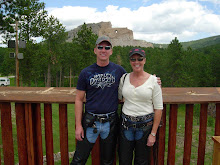What do I mean by "Representational, Proportional" scenarios? A more "common" term would be "bathtubbed", although I think this concept goes way back to Featherstone, Young, and Grant.
In short, all it is about is taking an historical action and scaling it to fit your existing collection size. There are some other considerations, and I think that is the "art" in the process.
Let me blather on and explain myself.
I see multiple posts on TMP or in blogs every day about refights of the battle of XYZ, using completely historical OOB's and ratings and terrain. Except.....does anybody enjoy these? I mean - if the real battle had 74 battalions on one side vs. 63 battalions on the other - who wants to play that game? Do you have a life? Not to mention the space and abstraction issues that arise from packing all the depth exaggerated units onto the table, the sheer time to move all the figures.....yawn. Those games remind me of monster board games. They sound good in theory, but by the time you get all the pieces set up, you want to just put it away because the thought of playing has become so daunting.
The solution is to take an historical action and just scale down the action.
But wait (I hear you say) - instead of doing that, I prefer to use grand tactical scale rules, and have each unit represent a brigade, with special rules for that appropriate level of command.
Well - that works, but quite often those types of games lack the tactical flavor and decision making that players like.
I much prefer to (using horse and musket terminology) use the battalion as the game unit and still have all the tactical interplay in the game.
We regularly scale a unit internally (ie, 1 figure = 50 men), but it is much less common to scale a battle externally (ie, 1 game unit = 5, or 10, or 17 real units).
Externally scaling battles also allows compression of ground scales, as well as terrain features. If you externally scale units, you should similarly do that for towns, villages, etc. (Have you looked at how many villages you'd have to use if you did a "true" scale game in NW Europe in WW2?) I'd also propose that the ground scale could be similarly scaled.
I think I'll take on an historical battle as a Proportional game and use that for some future posts as I work through the process.
No pictures this time....just thoughts.
Subscribe to:
Post Comments (Atom)

Brent: you're a man after my own heart. That is precisely my preference for refighting battles. I've done a few ACW actions that way: Wilson's Creek, and, yep, Gettysburg, Day 1.
ReplyDeleteFor the latter, I think from memory one of my 27-figure regiments represented roughly a brigade. The 4 CSA 'Divisions' received 4 regiments each (plus guns); Reynolds's I and Howard's XI Corps received 6 regiments apiece (I have an idea not all of XI Corps was up). I think I gave Buford a couple of 15-figure Cavalry battalions and a gun.
That game was a lot of fun (even though I was lumbered with Howard's command, which got clobbered as badly as it did in the real thing). Reynolds took quite a bit of shifting, and was forced out of position only on account the collapse of Howard's Corps behind him.
Cheers,
Ion
I think an example would be very illustrative!
ReplyDeleteAs you know, I regularly scale the larger Napoleonic battles down for FoB by changing what a unit represents from roughly 600 infantry for "Normal" scale FoB to up to 900, 1200, or even 1800 Infantry. I suppose you could also call that scaling using 1:3 units as well. Certainly at that ratio, adjust ting the ground scale somewhat is necessary for the map to table conversion, say to at least 1" = 50 yards, although I usually just leave the moves and ranges, etc (in inches) the same as in the base rules, and from a practical standpoint, it works fine. This is as opposed to halving (or more) the tabletop ranges and moves (in inches) proportionately.
I think this difference is what you're trying to get at, i.e., scaling down the number of units and the tabletop battlefield buy a certain common factor, but NOT adjusting the game measurements proportionately. That is the essence of "Bath-Tubbing", as I understand (and practice) it.
Me likes your thinking, Brent!
ReplyDeleteI was recently looking at an OOB, let the rules go unnamed, which called for a clash between two very large wings of cavalry on one flank of the battle. I looked at the units that would the be required, shaking my head: is it really "fun" to repeat the same clash of the same troops again and again, waiting to come to a decision that will affect the outcome everywhere else? Especially for a small game with one or two players, if not a solo one: what's the point to clash 15 units of cavalry with 12 units of cavalry if you can achieve the same strategic meaning (and balance) by having 5 units clashing with 4?
Ciao,
Adolfo